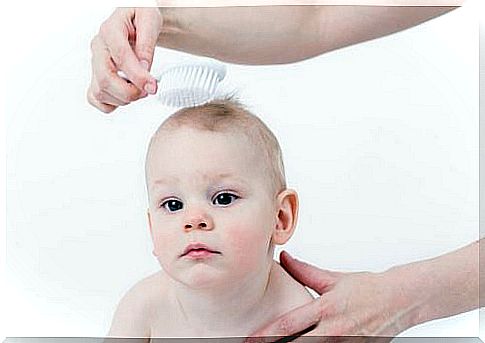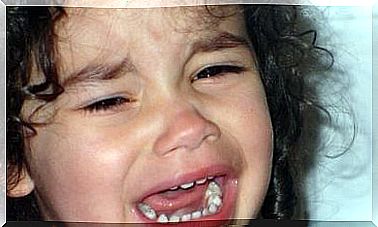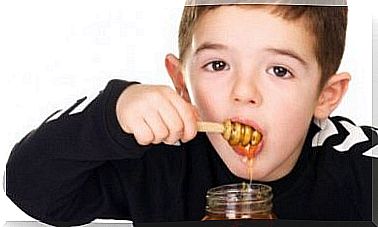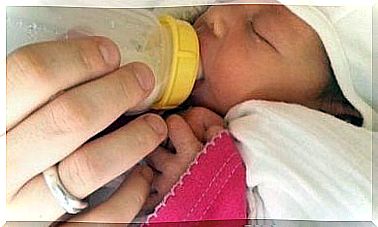What Is Baby Cradle Cap?

The cradle cap of the newborn appears in the first months of life and is the equivalent of dandruff in adults. Normally, these are small yellowish or whitish scales on the baby’s scalp.
Sometimes, cradle cap can appear in the eyebrows, eyelashes, nose, behind the ears, or even in other areas of the baby’s face and body.
Although the term “milk” has led many parents to associate it with lactose intolerance, in reality the causes of the appearance of the cradle cap in the newborn have nothing to do with his diet. For this reason, today we will dedicate this article to find out more about this topic.
What are the causes of cradle cap in the newborn?
Cradle cap appears as a result of the sebaceous glands producing excessive fat in the first months of a baby’s life.
More precisely, it is linked to the persistence of maternal hormones in the newborn’s body after birth. These hormones stimulate the sebaceous glands, which thus produce an excessive amount of sebum on the skin surface of the newborn.
As the baby grows, the concentration of these hormones decreases; this gradually leads to the disappearance of the phenomenon in the months following the birth.
Cradle cap is not contagious and is not linked to any lack of hygiene. Indeed, you should avoid very aggressive products that could aggravate this type of dermatitis.

How to treat a newborn’s cradle cap?
Newborn cradle cap usually does not require treatment and tends to disappear on its own over time. However, there are mothers who prefer to get rid of these scabs to improve the baby’s appearance. To do this, we recommend the most common solutions:
1. Wash your baby’s hair with a mild shampoo
In the event that cradle cap occurs on the scalp, wash the baby’s head with a suitable shampoo to remove excess fat. It is not necessary to use the shampoo every day, since it could ruin the delicate skin of the baby. Once every two or three days is enough.
2. Apply natural oils
It is possible to fight the cradle cap by applying a drop or two of sweet almond oil; this helps soften the scalp to make it come off easier. To obtain an optimal effect, let the drops act on the areas where the crust is visible before the moment of the bath.
However, keep in mind that some allergists advise against the use of almond oil due to the risk of allergy that nuts entail. However, you can replace it with olive or argan oil.
3. Gently massage the area
Very gently massaging the scalp or the affected area of the body for a few minutes with a suitable oil can be very positive.
Afterwards, it is recommended to brush the scalp to prevent the crusts from appearing separated and thus not having to remove them with the nails.
4. Brush with a soft-bristled comb
Using a soft baby comb helps eliminate scabs. Obviously, it is necessary to brush the scalp with extreme delicacy and attention so as not to irritate the skin even more.
If you wish to avoid any risk of infection, it is recommended not to remove the scabs that do not come off on their own and to use a soft bristle comb.

What can you do if the problem persists?
It is always better to opt for natural solutions when dealing with the cradle cap of the newborn. However, if you do not notice any improvement after 15 days of treatment, we recommend that you consult a doctor.
This is advisable if you notice redness forming in other parts of the body or if the child shows signs of inflammation. If, on the other hand, the scabs have become infected or inflamed, your doctor may prescribe applications of an antifungal cream or a local antibiotic to reduce the risk of infection.
Ultimately, cradle cap is a normal and benign phenomenon. Despite this, it can come back, even if treated correctly, because the glands continue to produce too much sebum for many weeks. With adequate attention, its development can be limited, up to its complete disappearance.









